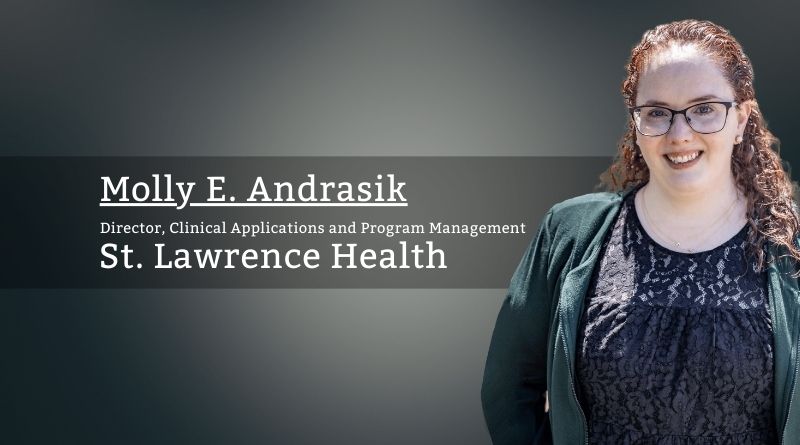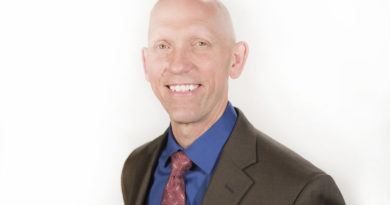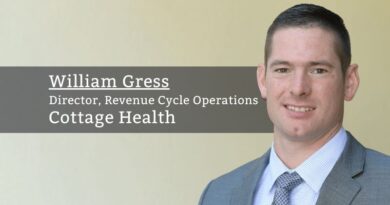Family-Inclusive Care: Using Technology to Facilitate Coordination and Improve Outcomes
By Molly E. Andrasik, Director, Clinical Applications and Program Management, St. Lawrence Health
Healthcare is complicated. Knowing the correct medications, procedures, and care plans requires years of education and experience. The average family member of a patient does not have this knowledge, and most do not claim to have it.
However, what the average family member does know is their loved one who is lying in that hospital bed. They know their “normal” behavior and when the patient is deviating from that; what makes them comfortable, what will cause them distress, what will help with their healing and what will hinder it. Sometimes they know the patient’s past medical history better than the patient does.
Families can provide a wealth of knowledge that, combined with the expertise of medical professionals, can create an equation for better patient outcomes…as long as both sides take the other seriously.
Respectful and frequent communication with a patient’s family needs to be a priority in the healthcare environment. When a family member brings a concern to a care team member, it should be listened to and considered. While the requests or concerns may not always have merit, and the healthcare professional may have clinical knowledge that overrides the request, it is important that the family feels heard and considered. Sometimes what the family brings will truly impact the patient’s outcomes and overall health.
This collaboration can be facilitated using various technology platforms in the healthcare environment. If implemented effectively, they allow for information sharing that can lead to inclusive and effective care plans. The following sections outline some examples of technology that can assist in family-inclusive care.
Family-inclusive care has immense potential to improve patient care and outcomes.
TeleSitter
TeleSitter technology has become more prevalent in healthcare settings in recent years, as the industry has faced staff shortages and a global pandemic. This technology utilizes cameras, two-way video and audio, an alarm system, and centrally located monitor technicians to monitor multiple patients at once.
When patients are placed on TeleSitter via a provider order, a reason is indicated (i.e., altered mental status, attempting to remove medical devices, fall risk, etc.). With this information, the monitor technicians know what to look for on the video feed, and if they see an issue requiring an in-person response they communicate that with the patient’s bedside care team. If the response is needed urgently, the monitor technicians can also set off a loud alarm in the clinical space.
TeleSitter monitor technicians should also be encouraged to communicate with the patient and their family members in the room via the two-way audio/video capabilities. These conversations have several benefits: the patient and family are able to meet the technician who will be keeping an eye on them, the family can convey any concerns they have about the patient, or give the technician tips on things to look out for, and everyone can feel more comfortable that the patient will be safe.
Perhaps the family knows a loud alarm would make the patient’s delirium worse because they suffer from PTSD. They could communicate this to the technician, who can then take all appropriate steps to avoid the need to use the alarm. Or the patient’s spouse knows they always get up at night to use the restroom. The technician can proactively be prepared to speak to the patient over the device and ask them to wait for assistance so they avoid a fall. These anecdotal pieces of information can significantly improve the patient’s experience.
EMR Patient Portals
Patient portals provide an easily accessible window into a patient’s medical record. Patients can see test results, notes, immunization history, problem lists, and other information. Patients can communicate with their providers via secure chats, and in some cases, schedule appointments. These tools have become commonplace in healthcare, with new features continually being developed.
If leveraged correctly, these tools can improve communication in the Inpatient setting. A perfect example would be configuring the Electronic Medical Record (EMR) to send provider and nursing notes to the portal. This allows the patient and their family to always be up-to-date on the patient’s status and the care provided without having to track down a staff member for a verbal report. This is particularly helpful when family members cannot physically be at the hospital. It is a streamlined and efficient way to communicate.
Family Participation in Provider Rounds
Multi-disciplinary provider rounds are a standard communication tool amongst healthcare team members, and have been shown to enhance patient care and decrease lengths of stay. Mobile access to the EMR via a smartphone or tablet can easily allow clinicians to reference patient data during these meetings, making the discussions more specific and effective. This rounding method could also easily be expanded to be inclusive of families with the help of some additional technology.
For example, the Case Management team could coordinate with the patient’s family member(s) and establish an audio or video call so the family could participate in the conversation with the care team. If Rounds occur outside of visiting hours when the family cannot be there, they would still be able to ask questions, share information, and be part of the care planning process.
Conclusion
Family-inclusive care has immense potential to improve patient care and outcomes. Family members bring valid and important information to the table, and with some mutual respect, the healthcare team and family members can collaborate to benefit the patient’s ability to heal. Technology can be leveraged to facilitate this inclusion. Health systems should be taking steps to make family-inclusion part of their culture, providing education and tools to the healthcare team to encourage collaboration.



